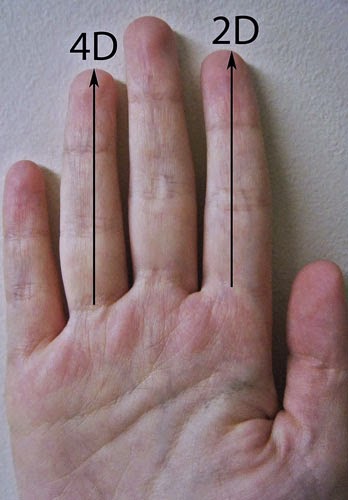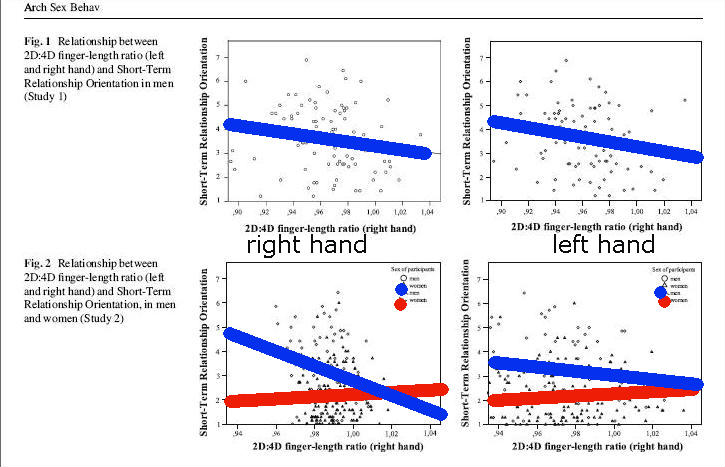
The inverse sensitivity to testosterone is indicated by variation in composition of the androgen receptor gene ( Manning et al. Low 2D:4D ratios appear to be associated with high levels of fetal testosterone relative to oestradiol, and high ratios with relatively high levels of fetal oestradiol ( Lutchmaya et al. 1997 Mortlock & Innis, 1997 Manning et al. The differences may be linked to the prenatal production of testosterone and oestradiol and, in the case of testosterone, to interactions with the homeobox genes Hoxa and Hoxd, which control differentiation of the urogenital system and development of the digits ( Kondo et al. This sexual dimorphism in 2D:4D ratios is apparent by 2years of age and appears to be established early in life, possibly by the 14th week of gestation ( Garn et al. It is generally agreed that 2D:4D ratios tend to be greater in females (closer to 1.0) and that gender differences tend to be larger for the right hand than for the left ( Manning et al. 2002a, b McFadden & Shubel, 2002 Paul et al. This particular ratio exhibits sexual dimorphism and left–right asymmetry and is associated with a surprising variety of morphological, physiological, sexual preference and behavioural traits as well as with ability in certain sports and with the risk of developing medical conditions such as autism, infertility and breast cancer ( Manning & Bundred, 2000 Robinson & Manning, 2000 Williams et al. Whilst 10 possible digit ratios are available for analysis on each hand, difficulties in measuring the first digit (1D, thumb) reduce this to six and, of these, the 2D:4D (index:ring) digit ratio has been the most extensively studied. The relative lengths of fingers on the human hand continue to attract considerable research interest. We conclude that age, lateral asymmetry and hand preference are potential confounding factors and that future study designs should take account of these as well as other known confounders such as ethnicity, birth order, menstrual cycle phase and sexual preference. In dextral subjects, significant lateral asymmetries in 2D lengths were seen at all ages but asymmetries in males and 4D lengths seemed to be age-dependent. Ratios tended to be greater in sinistral subjects. Lengths tended to be greater in females in younger subjects and greater in males in older subjects. Relative and absolute lengths displayed age, gender, hand-preference and age×gender interaction effects. Sexual dimorphism in 2D:4D ratios was apparent by 4years of age and age changes in ratios depended on gender, side and hand preference. Digits in females attained their maximum length about 2.2years (dextral subjects) or 5.1years (sinistral subjects) earlier than those in males.

Both digits exhibited biphasic growth with an early growth phase followed by a stable length phase.

We employed linear regression analysis to examine the growth trajectories of individual digits, analyses of variance to isolate main and interaction effects of age, gender and hand preference, and paired t-tests to identify lateral asymmetries. Hand photocopies and calliper measurement were used to obtain digit lengths. Participants between 4 and 60years of age were recruited from local educational sites. In an attempt to identify potential confounding factors in such studies, we have examined how relative and absolute digit lengths vary with gender and tested whether they are influenced by age, right–left asymmetry and hand preference. Human 2D:4D ratios (measures of the relative lengths of index and ring fingers) attract considerable research interest because they exhibit sexual dimorphism and are associated with various morphological, physiological and behavioural traits as well as sporting abilities and medical conditions.


 0 kommentar(er)
0 kommentar(er)
